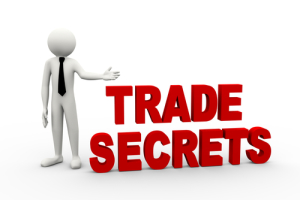Do Employers Own LinkedIn Groups Created By Employees?–CDM v. Sims

Photo credit: “3d rendering of business person presentation of trade secret word” // ShutterStock
Simms worked for plaintiff CDM Media but switched jobs to work for Box, allegedly one of plaintiff’s larger customers. Plaintiff alleges that Simms violated a non-compete and misappropriated its trade secrets.
Among other issues, plaintiff sought control of a “LinkedIn group” because both the group’s membership and the communications’ contents were allegedly its trade secrets. The court declines to grant the motion to dismiss:
More generally, too little is known about the contents, configuration, and function of the LinkedIn group at this time, to conclude as a matter of law that its list of members did not constitute a trade secret. Plaintiff alleges that the group contained the names of 679 current or potential customers, which information “would be extremely valuable to competitors of CDM” because these members “would be good candidates for some of the services and products offered by CDM and/or good partners. . . .” The complaint states that the “Bureau was developed over 4 years by CDM through great expenditures of time, cost and effort. . .” Plaintiff further alleges that “privacy setting[s] . . . limited access to the Bureau online community.”
Simms sought to explain that the privacy settings did not necessarily restrict group membership to a limited group, but the court says this type of inquiry is not appropriate at the motion to dismiss stage. However, the court concludes that the message contents are not per se trade secrets. Perhaps certain messages could be, but a generalized allegations that all messages were trade secrets does not cut it.
__
The “lawsuits over ownership of social media accounts” trend rose quickly and then fizzled. We got a few (largely unsatisfying) rulings dealing with ownership of LinkedIn contacts. This case does not add much to the mix. It still seems like a tough sell to characterize something like the identity of members in a LinkedIn group as a trade secret. Such memberships are often displayed publicly on LinkedIn profiles. One wonders how much control the putative owner exercised over membership. For what it’s worth, on the LinkedIn page, the owner of the group is designated as “Rob S.”
Illinois also has a social media privacy statute, which would seem to apply to this set of facts. The laws’ ineffectiveness in sorting out ownership issues aside, it prohibits an employer from requesting:
password or other related account information in order to gain access to the employee’s…account or profile on a social networking website or to demand access in any manner to an employee’s … account or profile on a social networking website.
LinkedIn easily falls within the statute’s definition of a “social networking website”.
Perhaps the dispute is really about alleged violation of the defendant’s non-compete clause, with the LinkedIn account ownership thrown in as an afterthought. I really question the value something like that could have to an employer.
Case citation: CDM Media USA, Inc. v. Simms, 2015 WL 1399050 (N.D. Ill Mar. 25, 2015).
Related posts:
Another Set of Parties Duel Over Social Media Contacts — Eagle v. Sawabeh
Ex-Employer’s Hijacking of a LinkedIn Account Is a Publicity Rights Violation–Eagle v. Morgan
Facebook Posts and Twitter Invites Don’t Violate Non-Solicitation Clause — Pre-Paid Legal v. Cahill
Employee/Ex-Employer Lawsuit Over Twitter Account Settles – Phonedog v. Kravitz
Battle Over LinkedIn Account Between Employer and Employee Largely Gutted–Eagle v. Morgan
Pingback: Marketing Day: Hostess' #OpeningDay Tweet, Google+ Stories Appear As Google Now Cards & More()